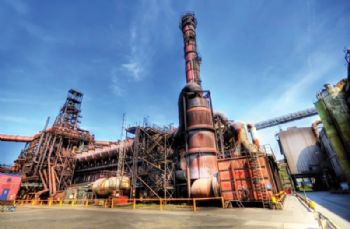
To permanently reduce CO
2 emissions, Arcelor Mittal has developed a low-emissions technology strategy that targets not only the use of alternative feedstocks and the “conversion of CO
2 emissions” but also the direct avoidance of carbon.
Moreover, the Group intends to launch a new project this year (in the Arcelor Mittal plant in Hamburg) that will use hydrogen on an industrial scale for the direct reduction of iron ore in the steel production process — a world first.
The Hamburg plant already has one of the most efficient production processes within the Arcelor Mittal Group, due to the use of natural gas in a direct reduction plant (DRI).
The aim of the new hydrogen-based process is to enable steel to be produced with the lowest-possible CO2 emissions. In addition, a co-operation agreement with the University of Freiberg is planned to test the procedure at the Hamburg plant in the coming years.
The hydrogen-based reduction of iron ore will initially take place on a ‘demonstration scale’, with an annual production of 100,000 tonnes.
Frank Schulz, CEO of Arcelor Mittal Germany (
www.corporate.arcelormittal.com), said: “Our Hamburg site offers optimum conditions for this innovative project: an electric-arc furnace with DRI system and iron ore pellets stockyard, as well as decades of know-how in this area.
“The use of hydrogen as a reducing agent will now be tested in a new shaft furnace.”
With the Hamburg hydrogen project, Arcelor Mittal is advancing pioneering technology for direct CO
2 avoidance as one of several potential pathways for low-emissions steel-making.
The Group is already investing more than 250 million euros in various technologies to reduce carbon emissions.
In Ghent, for example, waste carbon gases will be used for the production of alternative fuels or in chemical products.
Also being tested is the use of ‘biocoal’ from waste wood instead of coking coal as a reducing agent in the blast furnace.